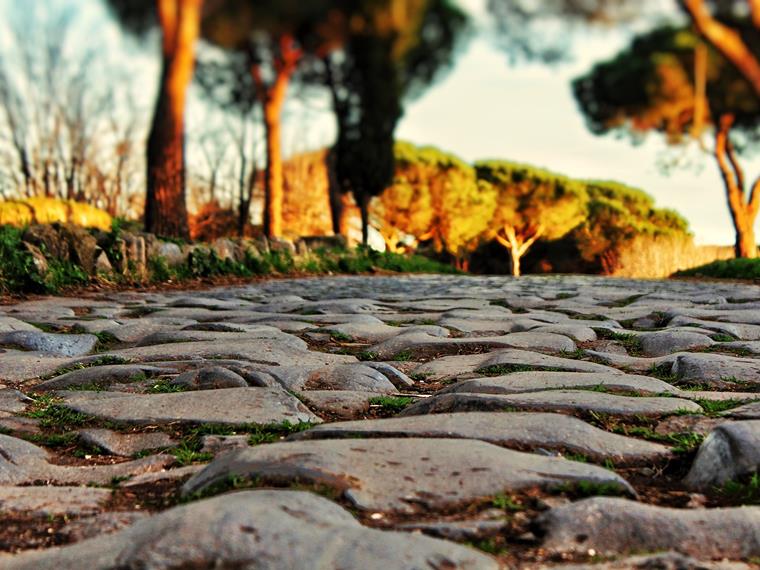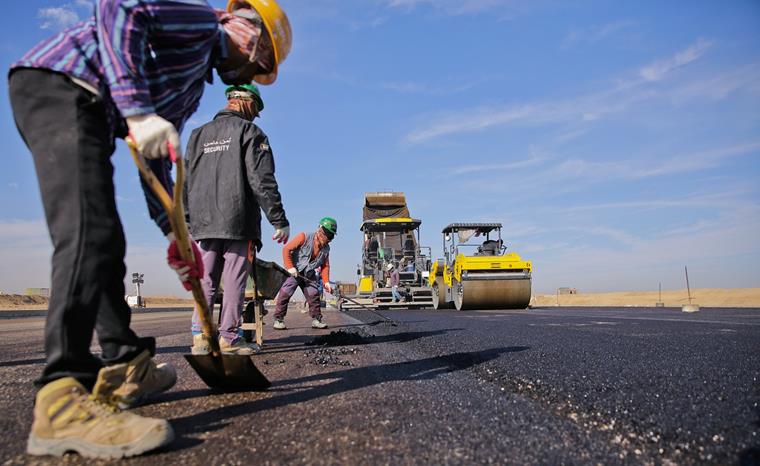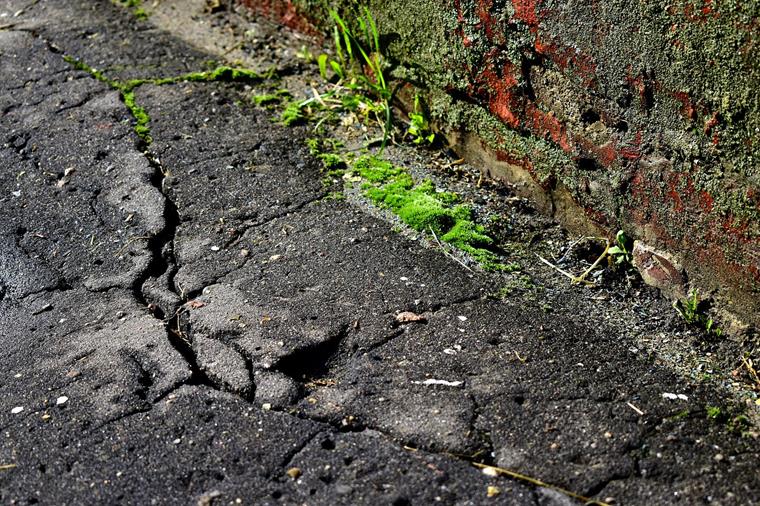History of Road Construction – All Roads Led to Rome
Europe is positioned very well in terms of road infrastructure. What many do not know – a large part of today's road network still goes back to the ancient Romans. At the time of the Roman Empire, the transport network in Europe was expanded on a large scale with the advancing conquests. Mainly paved paths and roads made of cobblestone or an ancient form of concrete were used here.
After the fall of the empire and the rise of the Middle Ages, ancient knowledge and interest in it was lost; as, unfortunately, in so many other areas. First in the 18th century, there was a boom in road construction and roads were also constantly developed in the course of the following industrialization.
Modern Road Construction
A lot has happened since then. Nowadays, road construction is not just about the roads themselves. Modern road structures involve the design, construction, and maintenance of both roads and pedestrian walkways. Anyone who deals with it, encounters the following fields of activity:
- Unbound superstructure layers
- Paving works
- Asphalt works
- Construction of drainage systems and embankments
- Road equipment (traffic lights, signs, markings, and so on)
In Germany, three materials are used: Asphalt, concrete, and cobblestones. Modern road structures aim to create permanent and safe areas for traffic. Not only that – economic and environmentally friendly properties also play an important role. But how do you want to implement this environmental aspect?
Concrete or Asphalt Roads?
Asphalt and concrete are used especially for large public road projects, such as highways. But which material is actually better? In some cases, opinions differ greatly. Asphalt roads are constantly being torn up and repositioned. A concrete road, however, has a much longer construction time. What are the strengths and weaknesses of both materials? We'll take a closer look at the whole thing.
Asphalt roads are relatively flexible and have many degrees of freedom in terms of geometry. Straight transitions or radii in the curves are thus possible without any major problems. Building a road using asphalt is relatively quick and the duration of the construction site is limited.
Unfortunately, such a road is only conditionally resilient. Truck traffic quickly affects the road surface, as do high temperatures. So it has to be renewed regularly. It is true that punctual refurbishments can be completed very quickly, but may also be necessary more often, depending on the road load.
On the other hand, concrete is a far more durable building material. If it is installed correctly, it will thank us with a long life and high resilience. At night, the lighter material ensures a better view. The raw materials for this come directly from Germany and nothing has to be imported.
However, the installation is more complicated, and anyone who has ever cast an eye on a concrete highway knows: it can take a while. Unfortunately, concrete is not nearly as flexible as asphalt, which is why transitions and radii are rather difficult to achieve.
Both materials have their advantages and disadvantages, so it is necessary to consider carefully each construction project to determine which one is more suitable in the specific case. The following criteria have an influence on the choice of road surface:
- Expected loads on the road
- Costs
- Construction / renovation time
- Traffic obstruction due to construction works
- Topography / geometry
- Safety
- Connection to traffic routes
- Subsoil
- Sustainability
Asphalt Roads
While we're on the subject of sustainability: Asphalt roads are recyclable! How is that supposed to work? Here, we first look at how and from what asphalt roads are made. The road surface consists of different layers. Everyone has probably seen once on a construction site that these layers are milled off one after the other and then reapplied later.
Basalt is mined in quarries and then ground to the desired grain size. This creates fine chippings. This is added to a mixture of different materials, depending on the use, for example, sand and old road debris. Then, everything goes into the oven and then the binder is added. It is bitumen, obtained from petroleum. At the end, this mixture becomes asphalt, which is placed onto roads, cooled down, and solidified.
Important: It is true that tar roads are still often used, but tar has been banned as a binding agent since 1984 due to health hazards. Tar from old road surfaces must be disposed of separately and is not reused.
Reusing Roads
Now, back to our asphalt. In Germany, roads are constantly being demolished and renewed. Isn't that bad for our environment? Not necessarily, because recycled asphalt is used almost exclusively – in other words, a real life cycle. Asphalt has been systematically reused since the mid-1980s. This is stipulated in the Circular Economy Act.
How does it all work? A road is removed in layers. Each of these layers is transported separately and processed by sieving or breaking. The result is a granulate that is stored at special locations or directly at the mixing plant. At least until it is used again.
The crushed asphalt layer, provided it does not contain any pollutants, such as tar, is added to a new asphalt mixture in the mixing plant, and thus gets back onto the road. Around 90% of the asphalt used in Germany can be reused.
Rejuvenation of Asphalt Roads
So, are asphalt roads fully reusable? Unfortunately, there is a problem with the bitumen binder. It starts to age from the moment it is first processed. It no longer sticks as well and hardens. Using various additives, attempts are made to change the properties of bitumen during recycling in such a way that the properties improve towards a longer service life.
These additives are called rejuvenators in technical terms, that is, rejuvenating agents for the bitumen in our asphalt. They prevent the bitumen from breaking quickly and improve the flow properties almost to their original state. This makes them an anti-wrinkle agent, so to speak, for recycled asphalt that comes back onto roads. As an alternative, rejuvenators can also be used to seal the finished top layers.
The materials used as rejuvenating agents vary. Usually, they have the following additions:
- Mineral oil products (bitumen products, mineral oils, hydrocarbons)
- Organic solvents
- Siloxanes
- Vegetable solvents (vegetable oils, fatty acids, resins)
However, rejuvenators are still being researched to find the best additives for recycling asphalt. By trying different rejuvenators for the bitumen, the effort is currently relatively high. In some cases, the mixing systems have to be readjusted and the analyses take up a lot of time. Finally, the test tracks are subject to a series of long-term tests. So we hope that we will soon find a means with which we can work extensively in road construction.
Conclusion: Recycling in Asphalt Road Construction
Therefore, it can be stated that road construction is far more sustainable than expected. Research is still ongoing into how the asphalt on our roads can be further improved. The goal is the longest possible service life or the longest possible life cycle of the bitumen, which holds the asphalt together.
Of course, the use of asphalt roads is a big plus, especially with regard to our environment. Hardly any new raw materials have to be extracted. The recycling process with the layer-by-layer removal and storage is time-consuming and space-consuming, which involves certain costs. Despite this, we can also see that research is constantly striving to improve asphalt properties. We are excited to see what else awaits us in the future.
Thank you for your interest in the topic. We look forward to hearing or reading from you again in the next episode, when we'll be talking about: Digital and Innovative Trends in Civil Engineering!

.png?mw=760&hash=c2138564c69592f43754ec579c84ba182ab2a015)




